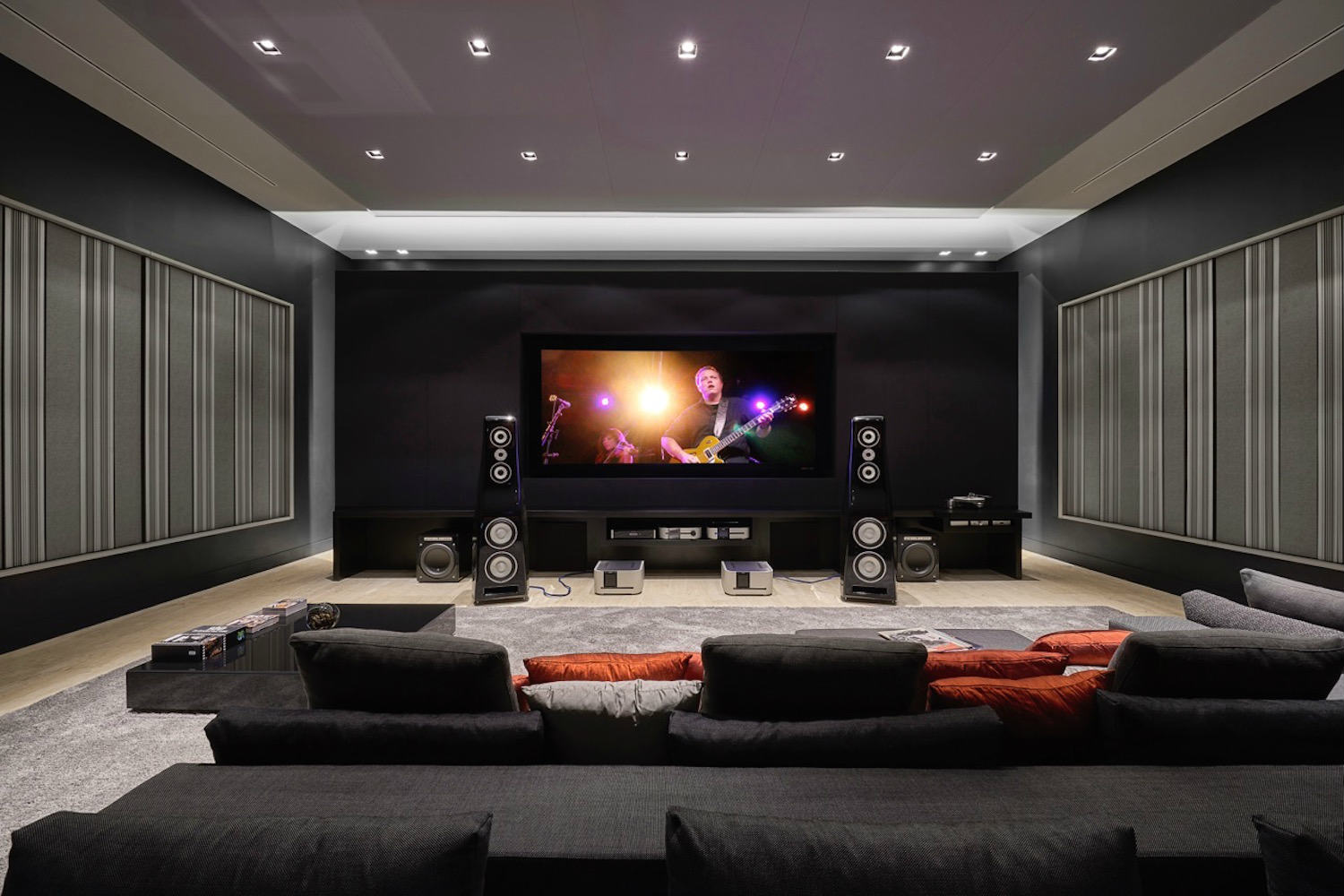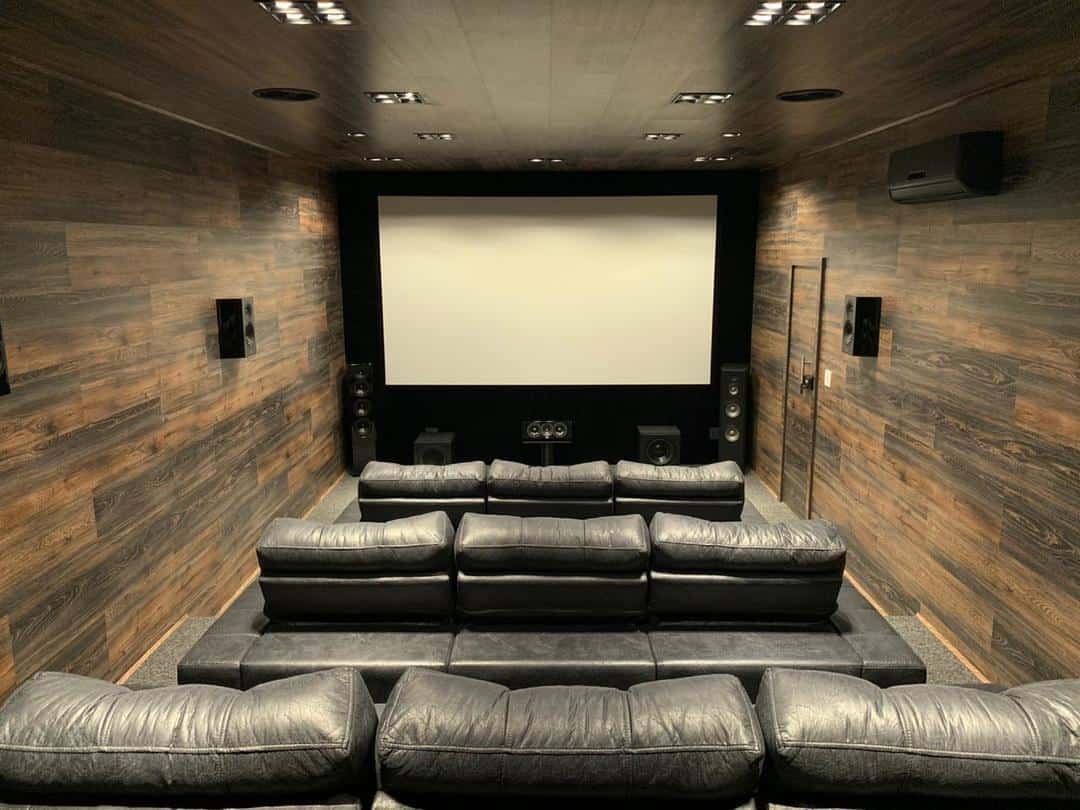Upgrade Your Living Space with Tampa Home Theater Installation
Wiki Article
Home Theater 101: Everything You Required to Know for a Motion Picture Experience in the house
Creating a home movie theater that equals the cinematic experience of a commercial theater involves careful consideration of several components, consisting of screen choice, audio systems, and space design. Whether you are contemplating the excellent display size or the details of surround noise, comprehending these principles is important.Selecting the Right Screen
When establishing up a home cinema, choosing the ideal display can make or damage the seeing experience - home theater design tampa. The screen offers as the centerpiece of your setup, influencing picture high quality, watching angles, and general visual. Secret factors to think about consist of screen type, resolution, and dimensionFirst, establish the proper display size based on your space measurements and seating range. Next off, select in between numerous screen types, such as fixed-frame, mechanized, or retracting displays, each offering unique benefits.
Resolution is one more crucial element. For a truly immersive experience, consider a display designed for 4K and even 8K content, making certain intensity and clearness. In addition, think about the display's gain, which affects illumination and comparison; a greater gain can enhance brightness in well-lit spaces, while a reduced gain may be preferable for darker environments.
Picking Sound Equipment
Audio tools is a crucial element of any type of home movie theater system, considerably boosting the overall watching experience. The selection of audio equipment can identify the deepness, quality, and immersion of noise, crucial for developing a cinematic ambience.When choosing audio devices, think about a surround audio system, which normally includes a receiver, multiple audio speakers, and a speaker. A 5.1 or 7.1 channel system is recommended, where the initial number stands for the speakers and the 2nd the subwoofer, supplying an immersive soundscape. The receiver is the heart of the system, managing audio and video signals, and must sustain contemporary formats like Dolby Atmos for an improved spatial experience.
Quality audio speakers are vital; search for designs that offer a balanced audio account with excellent bass action. Floor-standing audio speakers can create richer noise, while shelf choices save space. In addition, take into consideration wireless options for convenience of setup, although wired systems typically provide premium efficiency.

Optimum Seating Plans
Developing an optimal home theater experience pivots substantially on optimal seating arrangements. The arrangement of seats plays a vital function in both comfort and viewing quality, straight influencing the general motion picture experience.First, take into consideration the display dimension and checking out distance. A typical guideline is to position seats at a distance roughly 1.5 to 2.5 times the diagonal size of the display. This makes certain an immersive experience without stressing the eyes.
Following, altitude is important. If your seats remains in a tiered style, the back rows ought to be greater than the front to avoid obstructions. For level seats, ensure that the front row is not as well near the screen, which everyone has a clear view.
Additionally, take into consideration the arrangement in terms of social characteristics. Group seats can enhance the communal experience, while specific seats might be liked for individual viewing.

Finally, focus on convenience with ergonomic seats that supports home theater tampa extensive watching durations. Incorporating recliners or supported seats can dramatically boost the experience, making the home cinema a recommended destination for both entertainment and leisure.
Lighting and Ambiance
Effective lighting and atmosphere are necessary parts of a well-designed home theater, as they substantially influence the seeing experience. The best lights can improve the cinematic feeling, while poor choices can detract from it. For ideal outcomes, consider a split lights approach that consists of ambient, task, and accent lights.Ambient lighting gives general illumination, making sure that the room is not entirely dark, which can stress the eyes. Dimmer switches are extremely suggested, permitting for changes based on the web content being seen. Job lights, such as wall surface sconces or floor lamps, supplies useful lighting for tasks like reading or navigating the room without interfering with the general atmosphere.
Accent lighting can be used to highlight building functions or develop centerpieces, adding deepness and passion to the space. LED strip lights behind screens or along racks can offer a subtle glow that boosts the aesthetic experience without frustrating the viewer.

Wiring and Installation Tips
A tactical electrical wiring arrangement is important for attaining optimum efficiency in your house theater system. Correct circuitry not just makes sure high-grade sound and video signals however also boosts the overall aesthetic of your space. Begin by drawing up your layout, identifying where each element will be placed, including your screen, speakers, and receiver.When picking wires, prioritize high-quality, properly assessed electrical wiring to reduce signal loss. HDMI cords should be used for video clip connections, while speaker cable need to match the requirements of your audio speakers and amplifier. Opt for in-wall ranked cables to comply with safety and security requirements and keep a tidy appearance.

Final Thought
In summary, creating an outstanding home cinema experience requires cautious consideration of numerous elements, including display option, audio tools, seating arrangements, illumination, and circuitry. Each element plays an essential duty in achieving optimal efficiency and atmosphere, inevitably enhancing the satisfaction of home enjoyment. By focusing on these factors, a cinematic ambience can be successfully replicated, allowing for immersive watching experiences that match traditional theater setups. Focus to detail in each area is necessary for overall contentment.Developing a home theater that matches the motion picture experience of a business theatre entails cautious factor to consider of several elements, including display selection, sound systems, and area layout.When establishing up a home cinema, selecting the best screen can make or damage the seeing experience. Next, select between different display types, such as fixed-frame, mechanized, or retracting screens, each offering distinctive advantages. For an absolutely immersive experience, think about a screen created for 4K or even 8K web content, guaranteeing sharpness and clearness.In summary, creating an outstanding home cinema experience needs careful consideration of different aspects, consisting of screen selection, audio equipment, seating arrangements, illumination, and electrical wiring.
Report this wiki page